Hurricane Idalia could have been ‘much more devastating’ if not for a last-minute natural phenomenon – despite Category 3 storm wreaking havoc across Florida and stretching into North Carolina
As Hurricane Idalia approached Florida’s west coast in the early hours of Wednesday morning, forecasters warned that gusts of up to 130 mph would tear up Tallahassee and wreak havoc in surrounding areas.
But as Florida residents braced for impact, the tornado twisted and slowed thanks to a natural phenomenon in which the wall around the hurricane’s eye was “replaced” as the system restructured.
While the hurricane caused significant damage and resulted in at least two deaths, experts warned the damage could have been much worse.
Idalia was marked as a Category 4 hurricane at 6 a.m. Wednesday, before winds dropped to 125 mph and was downgraded to a Category 3, according to the National Hurricane Center.
Air storm monitors also revealed that the hurricane made a last-minute turn before reaching Tallahassee, sparing the more densely populated area from the eye of the storm as it made landfall north of the city on Keaton Beach shortly before 8 a.m. .
In the early hours of Wednesday morning, Hurricane Idalia’s eye underwent an “eyewall replacement cycle,” a natural phenomenon that could have prevented further destruction
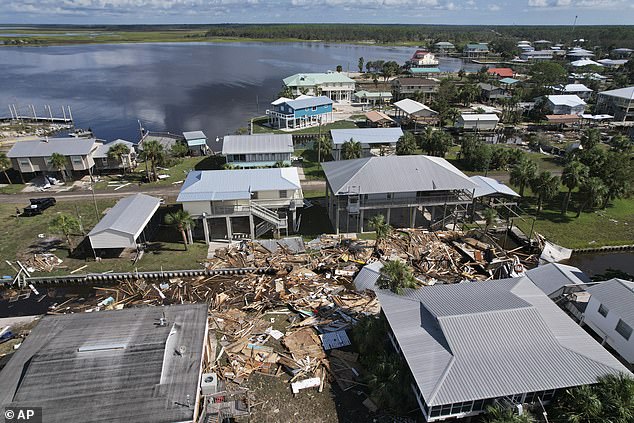
The twister caused widespread destruction on Florida’s west coast, and at least two people lost their lives in separate weather-related crashes hours before Idalia made landfall.
The natural process that may have saved lives is known among meteorologists as an “eye wall replacement cycle,” and is a common part of a hurricane’s buildup before it makes landfall.
As storms become more powerful, the eye of the storm narrows and tightens as it accelerates. When it reaches its maximum speed, a new eyewall can form around the epicenter.
“Like a figure skater who retracts her arms instead of extending her arms, the hurricane spins with much more energy, force and ferocity when closely monitored,” said Ryan Maue, a meteorologist and former chief scientist at the National Oceanic. and atmospheric administration.
When this happens, the eye of the storm loses momentum, which happened Wednesday morning when Idalia was downgraded to a Category 3 hurricane.
While an “eyewall replacement cycle” reduces a storm’s strength, it also increases its reach as the epicenter expands as gusts diminish. Given enough time for this process, the storm could become much more powerful than before, as wind speeds could increase again.
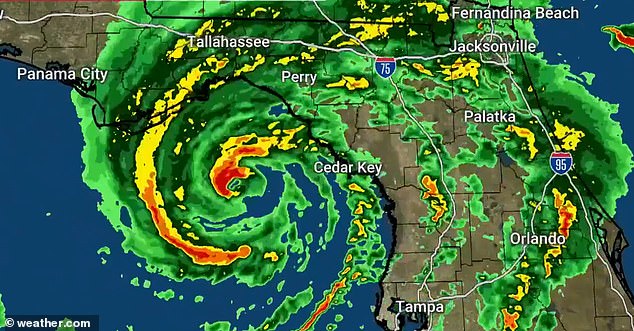
After the storm’s strength abated, forecasters were relieved to see the storm turn north away from the state capital of Tallahassee and toward less populated Keaton Beach.
The length of time it takes to replace can range from as little as 12 to 18 hours to as long as 2 to 3 days, according to NOAA. These cycles can occur multiple times during a twister’s journey.
But in the case of Idalia, the substitution occurred so close to Florida that landfall friction reduced wind speeds.
Donald Jones, a National Weather Service meteorologist in Lake Charles, Louisiana, said forecasters believe the cycle was “favorable from a timing perspective” given the significant damage still seen in affected areas under the weakened storm.
In Tallahassee, home to about 200,000 people, Florida State University and Governor Ron DeSantis’ mansion — which was struck by a falling tree during the storm — saw significant damage but were spared the eye of the storm.
Instead of attacking the state capital, Idalia turned to the north-northeast and made landfall near Keaton Beach, the Hurricane Center announced at 7:45 a.m. Wednesday.
“If that twist hadn’t happened, there would have been much more devastating consequences here in Tallahassee,” said Kelly Godsey, a meteorologist with the National Weather Service in Tallahassee who New York Post that he and his colleagues slept in the weather office the night of the storm to monitor the situation.
“Eyewall replacement is common in major hurricanes, so when you see that, it leads to a temporary weakening,” he added.
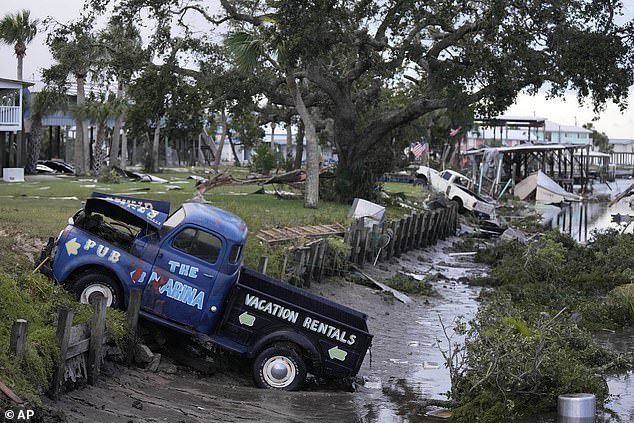
Businesses across the state were hit hard and several people revealed they may have to leave their homes for good
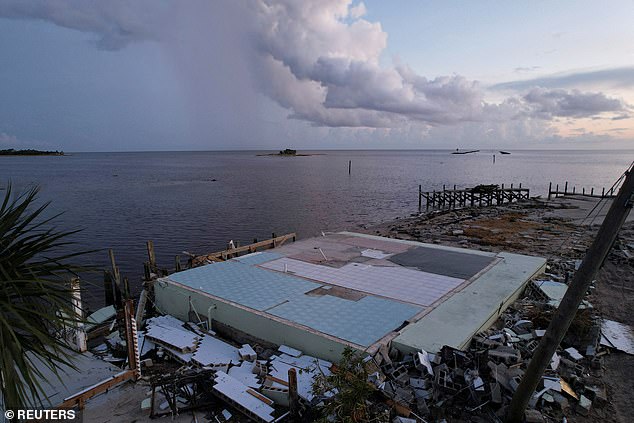
Entire houses were destroyed to their foundations by the storm
While some may have been relieved when Idalia landed with less force than once feared, the consequences for thousands of people were severe as damage extended across much of the state’s west coast and into Georgia and South Carolina.
After slowing down before reaching the coast, the National Weather Service tracked the storm moving ahead at 18 mph, a surprisingly faster-than-average speed that meteorologists say may have been both a good and a bad side effect.
Due to its speed, the storm moved through certain areas quite quickly, which limited some of the damage, but also allowed the storm to maintain its momentum and continue its path.
Idalia’s strength and large radius allowed the storm to reach large parts of Florida before hitting Georgia and the Carolinas, with the tornado still causing damage Thursday as storm surges were observed in North Carolina.
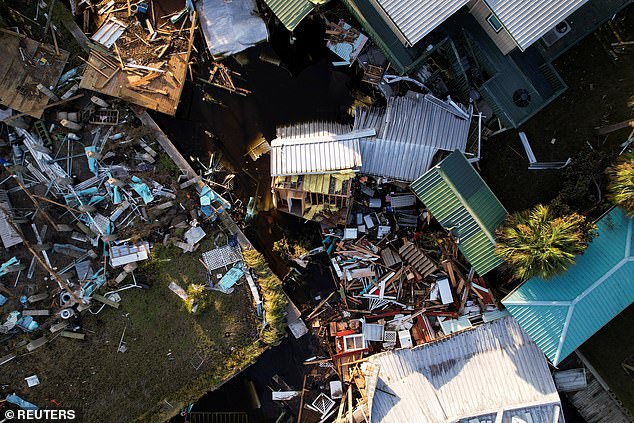
The hurricane, which made landfall Wednesday morning, is expected to cause billions of dollars in damage
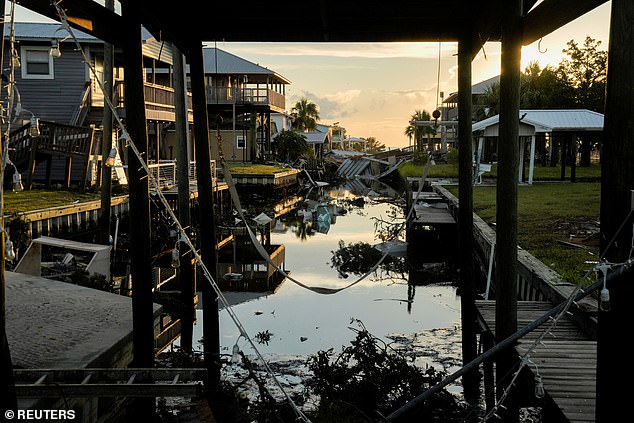
The strength of the storm stretched from Florida’s west coast (pictured in Horseshoe Beach, Florida) all the way to North Carolina.
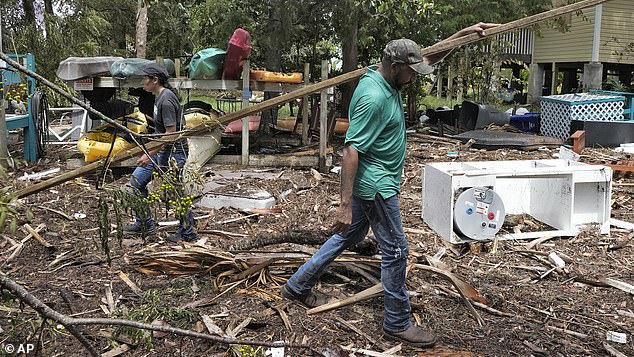
Entire towns were flattened by the hurricane, while residents of Cedar Key, Florida (pictured) were tasked with clearing the tornado’s debris
The full extent of the damage has yet to be determined, with officials fearing the cleanup could cost billions.
Entire homes were razed to the ground by the fierce storm, destroying between 4,000 and 6,000 homes in Florida’s Pasco County alone, said county manager Mike Carballa.
Much of Cedar Key, an island home to 700 people in the eye of the storm, was believed to be under water on Thursday as officials warned the death toll could rise if all small towns along the coast are searched.
“We have several trees down and debris on the roads — don’t come,” the Cedar Key Fire and Rescue Department said in a social media post.
The devastation also led President Joe Biden to formally declare a major disaster, allowing the White House to funnel federal funds to affected areas.
. “The president’s action is making federal funding available to affected individuals in Citrus, Dixie, Hamilton, Lafayette, Levy, Suwannee and Taylor counties,” the White House said in a statement Thursday. Biden said he will visit Florida on Saturday.
Florida Highway Patrol officers reported that two people died in separate weather-related crashes hours before Idalia made landfall, though no direct hurricane-related deaths have been confirmed after Idalia made shore.
In one case, a 59-year-old man in Gainesville died after he lost control of his truck during extreme rain on the roads and ended up in a ditch.
Another motorist, a 40-year-old man from Pasco County, was driving “too fast for the conditions” and fatally struck a tree, highway police said. Neither victim has been identified.
The storm brought strong winds to Savannah, Georgia as it headed for the Carolinas and was expected to move along the coast before turning into the Atlantic.
The National Weather Service said Idalia spawned a tornado that briefly touched down in Charleston, South Carolina, where two people suffered minor injuries when winds sent a car airborne.
